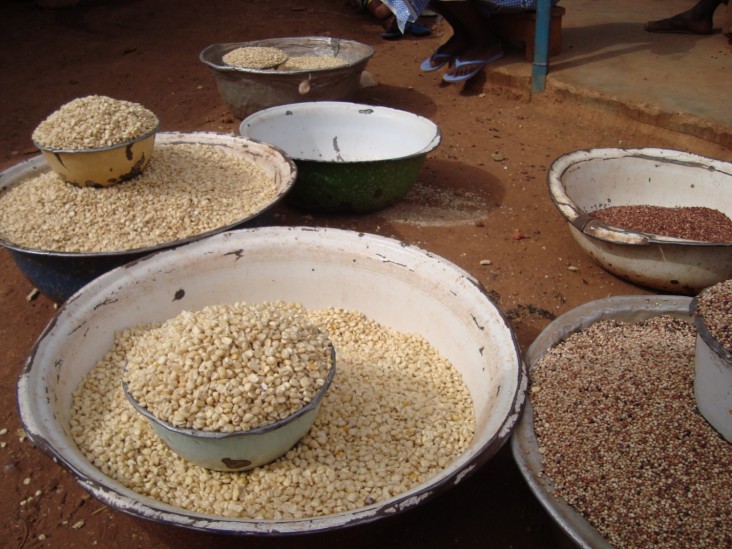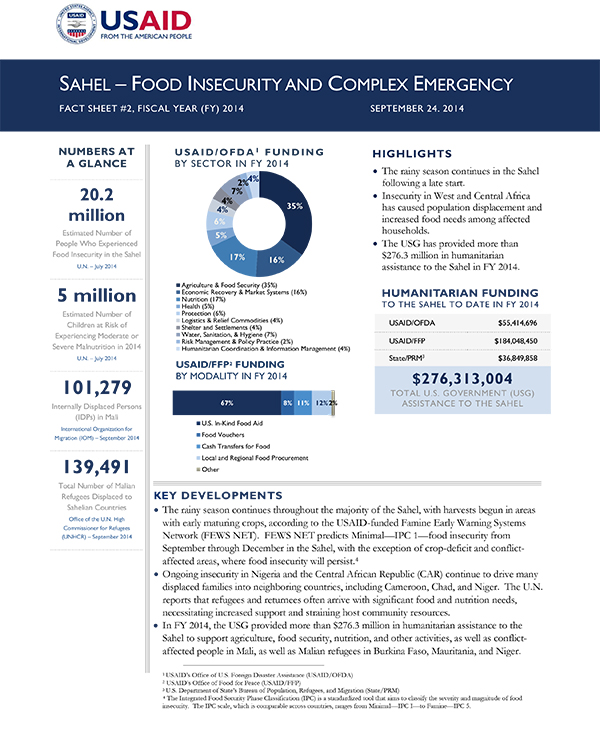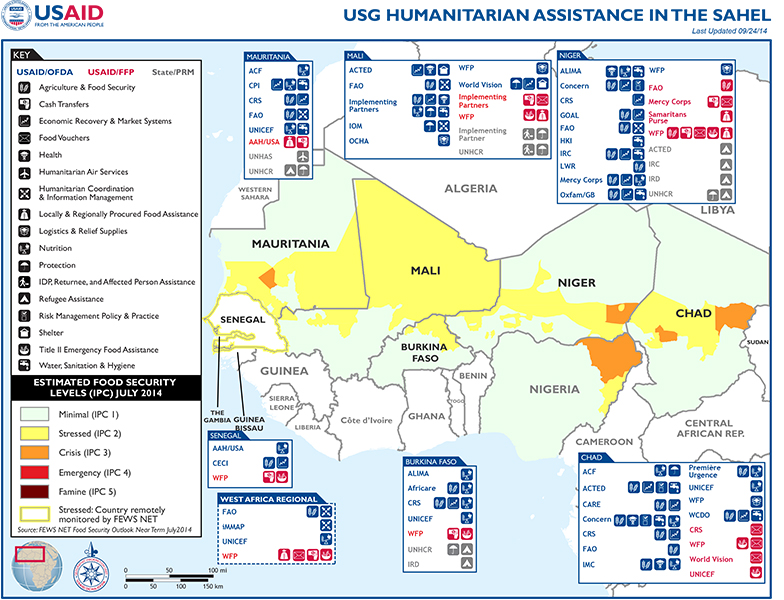- What We Do
- Agriculture and Food Security
- Democracy, Human Rights and Governance
- Economic Growth and Trade
- Education
- Ending Extreme Poverty
- Environment and Global Climate Change
- Gender Equality and Women's Empowerment
- Global Health
- Water and Sanitation
- Working in Crises and Conflict
- Disaster Assistance
- Political Transition Initiatives
- Conflict Mitigation and Prevention
- Countering Violent Extremism
- Disaster Risk Reduction
- Peacebuilding and Reconciliation
- Providing Safe & Secure Environments for Development
- Recovering From Crisis
- Resilience
- Tech Challenge for Atrocity Prevention
- World Humanitarian Day
- U.S. Global Development Lab

Latest Sahel Fact Sheet
Sahel Complex Emergency Fact Sheet #2 - 09-24-2014 ![]() (pdf - 411k)
(pdf - 411k)
Sahel Map - 09-24-2014 ![]() (pdf - 743k)
(pdf - 743k)
Key Developments
The rainy season continues throughout the majority of the Sahel, with harvests begun in areas with early maturing crops, according to the USAID-funded Famine Early Warning Systems Network (FEWS NET). FEWS NET predicts Minimal—Integrated Food Security Phase Classification 1—food insecurity from September through December in the Sahel, with the exception of crop-deficit and conflict-affected areas, where food insecurity will persist.
Ongoing insecurity in Nigeria and the Central African Republic (CAR) continue to drive many displaced families into neighboring countries, including Cameroon, Chad, and Niger. The U.N. reports that refugees and returnees often arrive with significant food and nutrition needs, necessitating increased support and straining host community resources.
In FY 2014, the U.S. government provided more than $274.3 million in humanitarian assistance to the Sahel to support agriculture, food security, nutrition, and other activities, as well as conflict-affected people in Mali, as well as Malian refugees in Burkina Faso, Mauritania, and Niger.
Background
The U.N. estimated that as many as 20 million people throughout the Sahel—including parts of Burkina Faso, Cameroon, Chad, The Gambia, Mali, Mauritania, Niger, Nigeria, and Senegal—were food insecure as of February 2014. In July 2013, an estimated 11.3 million people in the region were affected by or at-risk of food insecurity, according to the U.N. The year prior, erratic rainfall and decreased agricultural production propelled the Sahel into a food insecurity and malnutrition crisis that depleted household food stocks, resources, and livelihood assets.
In Mali and its neighboring countries, the effects linger from a conflict that began in northern Mali in January 2012 and triggered massive population displacement throughout the region. While the situation improved in 2013, the displacement, as well as disrupted trade flows and migration patterns, continue to complicate food security conditions in affected areas.










Comment
Make a general inquiry or suggest an improvement.